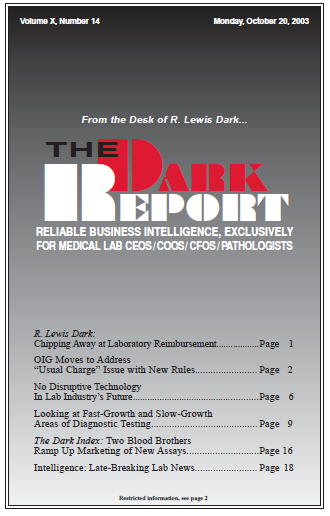GROWTH IN SPECIMEN VOLUME and revenues is the major challenge at the nation’s two largest laboratory corporations. How Laboratory Corporation of America and Quest Diagnostics Incorporated solve this problem will affect and influence every remaining clinical laboratory and pathology group practice in the United States. That’s because the marketing and pricing strategies of the two …
Two Blood Brothers Ramp Up Marketing of New Lab Assays Read More »
To access this post, you must purchase The Dark Report.


